The Science Behind CENTURY
Estimated reading time: 7 minutes
Academica University of Applied Sciences recently published a guide into the science behind learning authored by Prof. Dr. Carl Hendrick. It suggests ways for educators to enhance teaching practices and has been doing the rounds of the CENTURY office. We love the way it breaks down the key principles of effective teaching and learning, particularly because it aligns with how we built the CENTURY platform. This blog post summarises the science behind learning and explains how and where this has been applied to CENTURY.
What is Learning?
As stated by Prof. Paul Kirschner: ‘Learning, at its core, is a change in long-term memory’*. If information isn’t retained in long-term memory, true learning hasn’t occurred. Activities that keep students busy or engaged may not lead to learning unless they contribute to building long-term understanding.
The science of learning draws on research from cognitive science, psychology, neuroscience, and education to understand how students learn most effectively. These insights guide teachers in planning, delivering, and assessing learning in ways that align with how the brain acquires, retains, and uses knowledge.
How Learning Happens: The Four Elements
The guide outlines four key elements of how learning happens:
The Attentional Foundation
For learning to begin, attention is crucial. Our working memory has limitations, meaning we can only handle a small amount of information at once. If there’s too much irrelevant information (as cognitive load theory suggests), it can overwhelm students and hinder their learning process. To facilitate attention, it’s helpful to provide clear explanations, minimise distractions, present material in a step-by-step manner and logically sequence ideas to prevent information overload.
The Knowledge Connection
Learning is inherently a cumulative process, with new information building upon what students already know. This existing knowledge acts as a supportive framework, or scaffold, to help students grasp new concepts. Schema theory explains how we organise and structure knowledge, making it easier to retrieve and apply. In practice, this means activating students’ prior knowledge, using analogies to link new and old ideas, progressively building understanding, and consistently checking for any misunderstandings.
The Practice Architecture
Not all engagement with material is equally effective. To achieve superior learning outcomes, practice needs to be deliberate, sharply focused, and diverse in its approach. For instance, spacing out learning sessions over time—known as “spaced practice”—strengthens memory by allowing brief periods of forgetting, which then makes retrieval more robust. Similarly, “interleaving,” which involves weaving together different but related topics or problem types, improves the ability to transfer knowledge and fosters flexible thinking. For practical application, this means incorporating frequent, low-stakes assessments, varying the topics covered during review, encouraging students to test themselves, and presenting knowledge in a range of different contexts.
The Memory Consolidation Process
This refers to how knowledge becomes lasting and easily accessible over time. Actively recalling information from memory, known as retrieval practice, is more effective at strengthening memory than simply reviewing material passively. Therefore, it’s beneficial to include frequent opportunities for students to retrieve information, regularly review previously taught content, and encourage them to elaborate on their understanding through explanations.
The guide also features a section that debunks common myths about learning, such as the idea that students learn better when taught in their preferred learning style, or that engagement automatically equates to learning. But what interested us most at CENTURY was the section on the core levers of learning and how these can be applied in the classroom. This led us to thinking about how these levers have been deliberately implemented into the CENTURY platform.
Levers of Learning and CENTURY Platform Implementation
Research-backed teaching practices can act as ‘levers’ to significantly boost student learning. Here’s how CENTURY has implemented the core levers of learning covered in the guide:
Retrieval Practice
What it is: The act of recalling information from memory.
Why it matters: This process strengthens long-term retention of information and significantly reduces forgetting. We’ve written a blog explaining retrieval practice here.
CENTURY Implementation: The video learning content throughout contains opportunities to pause and practise (following the I do, we do, you do strategy), followed by assessment questions to apply learning. CENTURY’s Memory Boost recommends nuggets at the optimum time for review – based on Ebbinghaus’ research into the Forgetting Curve – encouraging long-term memory formation.
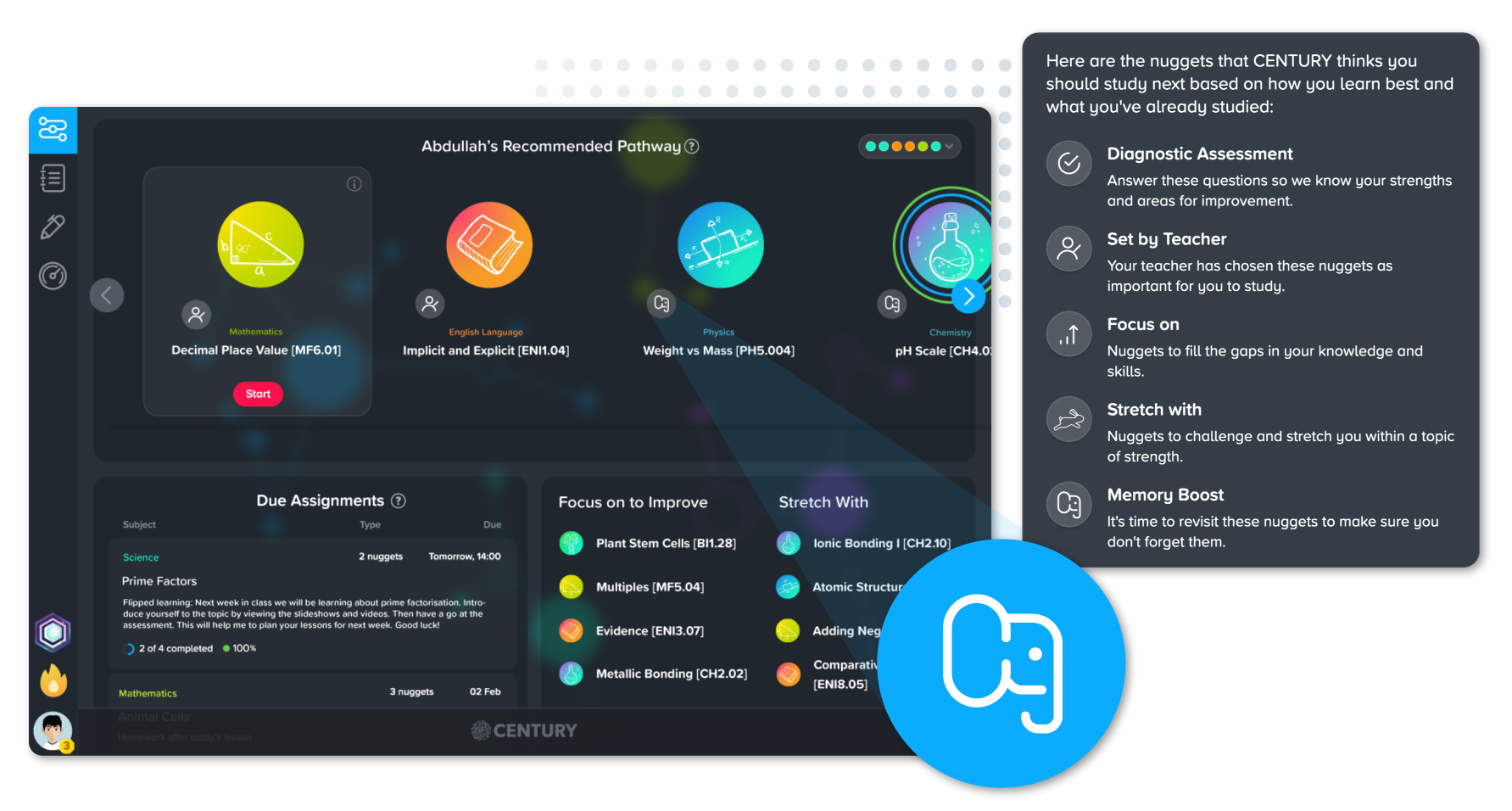
Menu showing the reasons why a nugget appears in the Recommended Path – including the Memory Boost
Spacing
What it is: A variant of retrieval practice which focuses on distributing retrieval practice over time, rather than in one concentrated session.
Why it matters: This strategy has been shown to improve retention since the recalling of information strengthens the connections and thus cements the learning into long-term memory. We’ve written previously about spaced learning here.
CENTURY Implementation: CENTURY’s Memory Boost feature incorporates spaced retrieval into the calculation of the optimal gaps for review. Focus on to Improve recommendations are based on a student’s prior performance within topics and incorporate spaced retrieval principles with the aim of achieving mastery. Nuggets contain learning content and questions that refer back to prerequisite and linked knowledge to ensure it is constantly being recalled and reviewed.
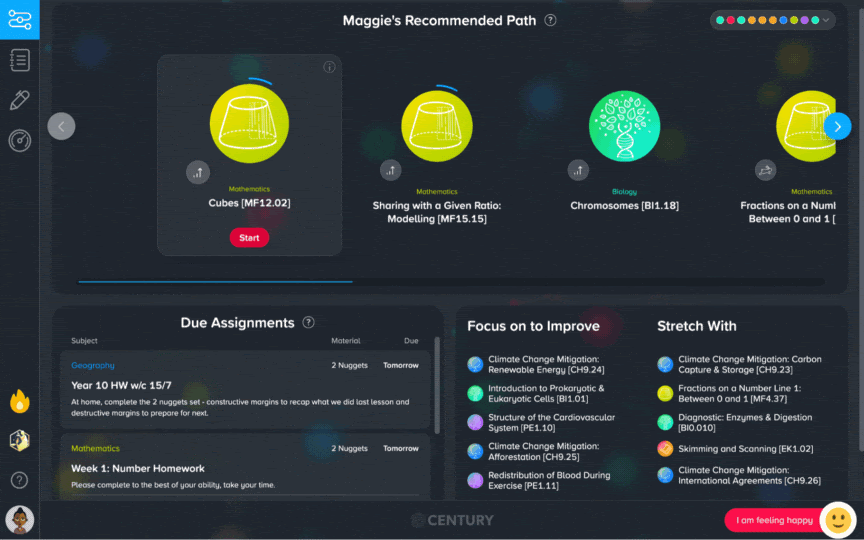
A student’s Focus on to Improve nuggets appears underneath their Recommended Path and in their Student Dashboard
Interleaving
What it is: Mixing different topics or problem types during practice.
Why it matters: Helps students discriminate between concepts and promotes flexible thinking.
CENTURY Implementation: Within a nugget, learners are exposed to a variety of questions assessing a range of skills. The Recommended Path interleaves different topics within a subject, encouraging students to apply their linked knowledge to varied contexts.
The platform also embeds cross-curricular links, for example a student struggling with calculating density in physics will be presented with a nugget on substitution from maths to help them succeed. This extends the principle of interleaving across the curriculum, further promoting flexible thinking.
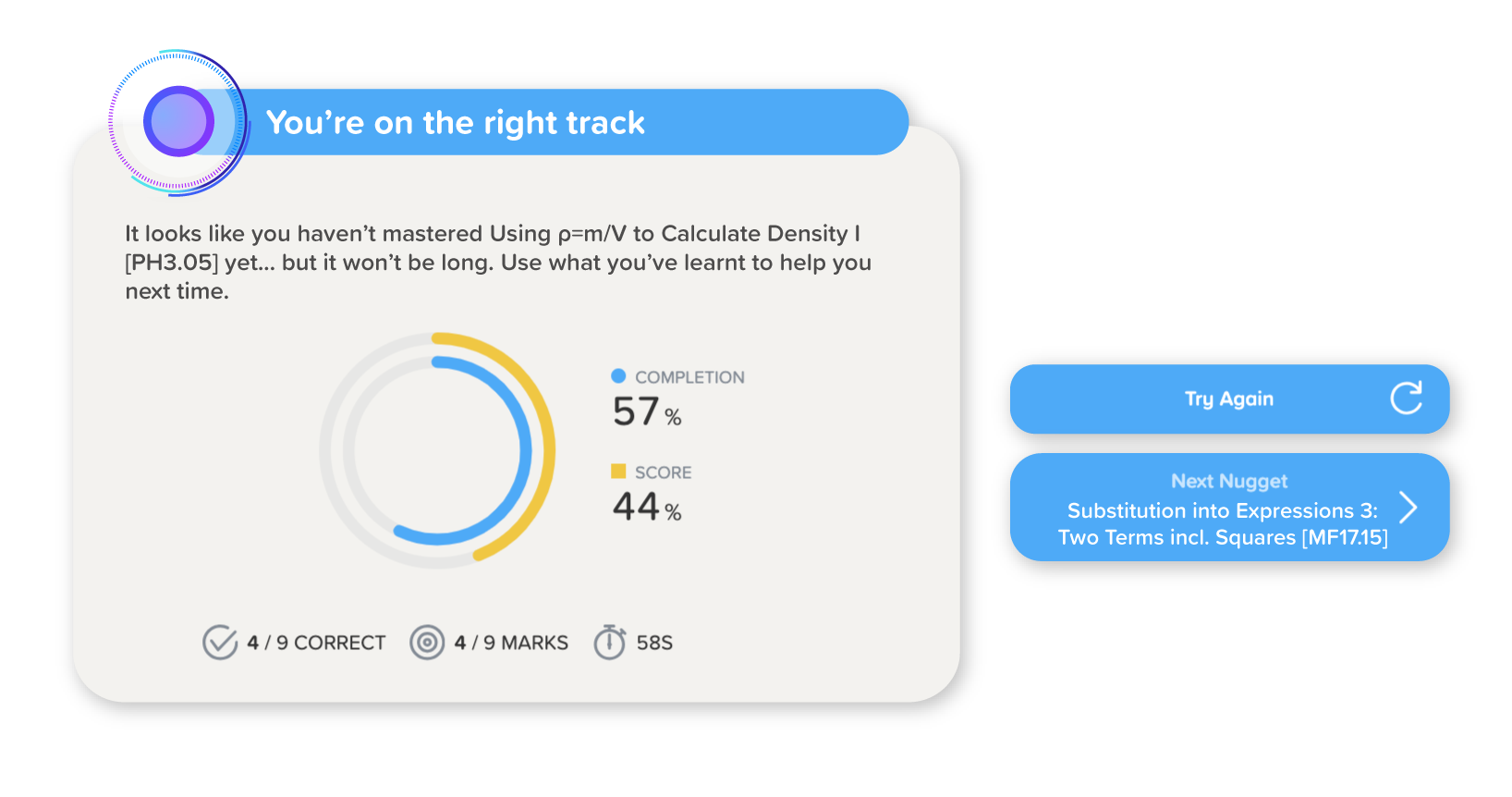
A student’s results page, showing where they have performed poorly in a physics nugget and that the suggested next nugget will support them with the mathematical concept
Checking for Understanding
What it is: Eliciting evidence of learning in real time.
Why it matters: Prevents ‘illusion of understanding’; allows teachers to adapt instruction and the learner to adapt their approach.
CENTURY Implementation: Students receive immediate feedback on their answers within the nuggets. For incorrect responses, students may receive corrective feedback within the question or be prompted to return to the learning material to understand where they have gone wrong. This allows students to self-correct and ensures they don’t reinforce their misconceptions.
The platform provides real-time data and analytics on student performance available to the teacher, learner and guardian. Dashboards allow teachers to instantly see where students are struggling, adapt their instruction and intervene where required.
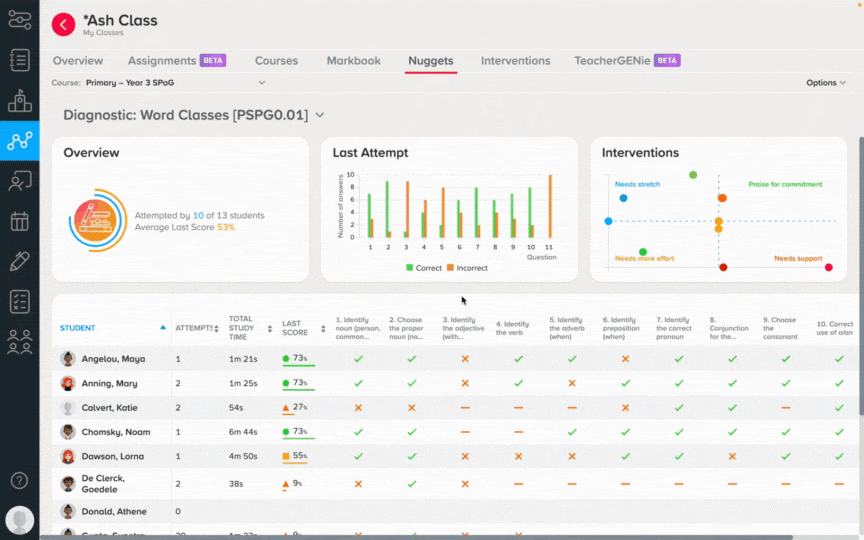
Scaffolding
What it is: Providing temporary support to learners.
Why it matters: Enables students to complete tasks they couldn’t do alone.
CENTURY Implementation: Nuggets contain worked examples within the learning content to demonstrate the application of certain techniques; students are initially shown the concept and then supported to complete an example before answering questions independently, following the approach of ‘I do, we do, you do’.
Assessment questions build in complexity as a nugget progresses and this is also the case as more complex elements are integrated into the topic. Throughout the course of a nugget, learners can always access the learning material, even as they are completing the assessment questions, allowing for different levels of support.
If students get a low score in a nugget, they will be presented with pre-requisite nuggets to help them to improve to ensure that they can plug any gaps in knowledge.
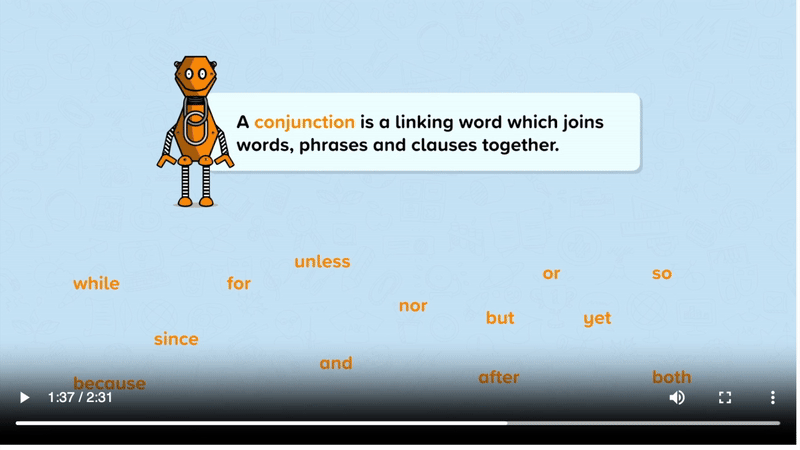
An example of a Your Turn in a primary maths nugget, followed by a student completing an assessment question
Explicit Instruction
What it is: Clearly showing and telling students what and how to learn.
Why it matters: Reduces ambiguity and cognitive load, especially for novices.
CENTURY Implementation: The curriculum is broken down into learning nuggets. Each nugget is focussed on a specific learning objective with video content containing detailed explanations. Content begins with the modelling of concepts before moving to practice, particularly for new or complex topics, integrating the testing effect, a form of retrieval practice, which ensures the knowledge or skills are embedded into long-term memory.
All animations are concise and complement the narration. This reduces cognitive load for learners, ensuring they are in the optimum position to take in new information.
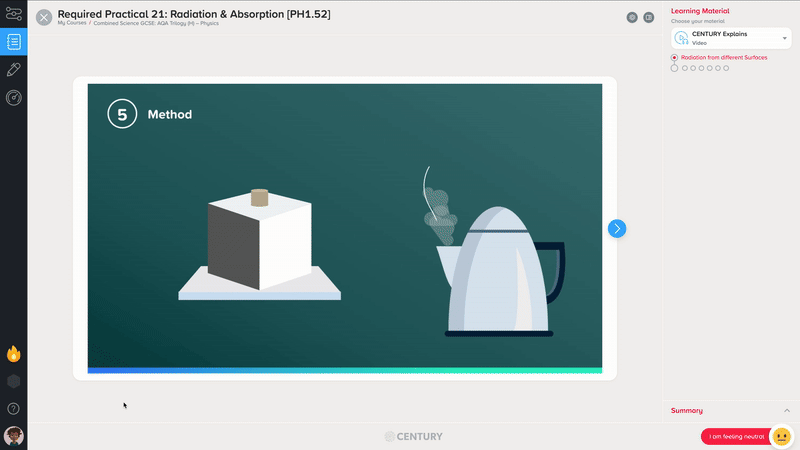
Deliberate Practice
What it is: Focused practice targeting specific sub-skills.
Why it matters: Helps students refine and master complex procedures.
CENTURY Implementation: Nuggets break down the curriculum into granular sub-skills. This means learners can practise specific skills to achieve mastery and also makes it easy for teachers to identify which skills need working on.
All nuggets contain self-marking questions to allow lots of practice. Immediate feedback ensures that students are able to self-correct any misconceptions.
Diagnostics identify where a student needs to improve and direct them to particular nuggets, increasing learner agency.
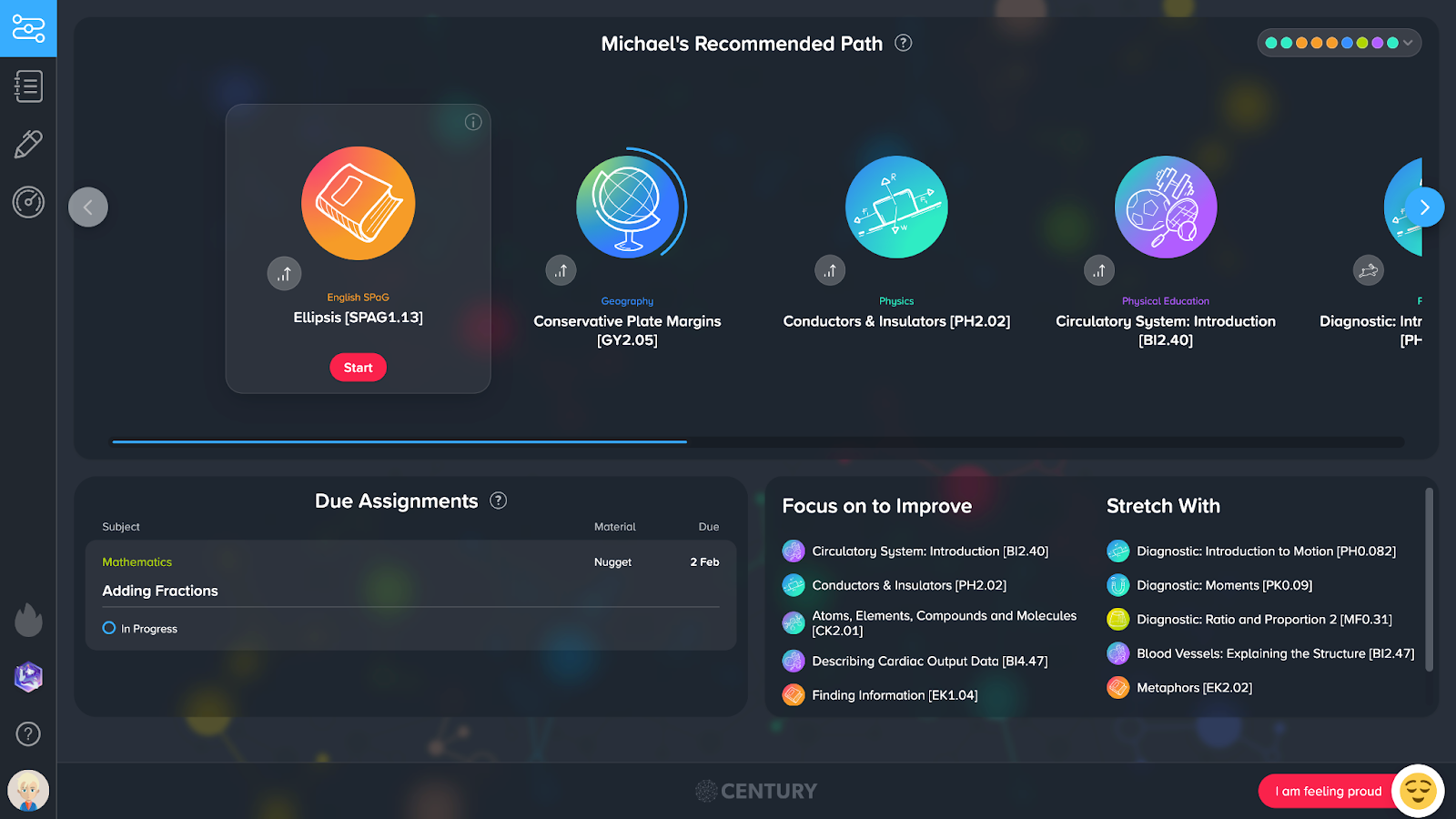
A student’s Recommended Path with a range of ‘Focus on’ nuggets appearing which are presented to learners to help plug gaps in knowledge
Formative Feedback
What it is: Feedback that guides future improvement.
Why it matters: More powerful than summative only feedback; needs to be specific and actionable. We’ve written on the power of feedback here.
CENTURY Implementation: The platform offers specific and actionable feedback on student responses, explaining why an answer is correct or incorrect and guiding them towards the right response and allowing them to take ownership of their learning journey.
Learners can always return to the learning material, even when answering the assessment questions. This encourages them to be more active in their learning. If they are struggling, they have the option to reveal the correct answer.
When creating the questions on CENTURY, our teacher team strives to provide detailed explanations when a learner gives a common misconception as an answer, ensuring these learners understand where they went wrong.
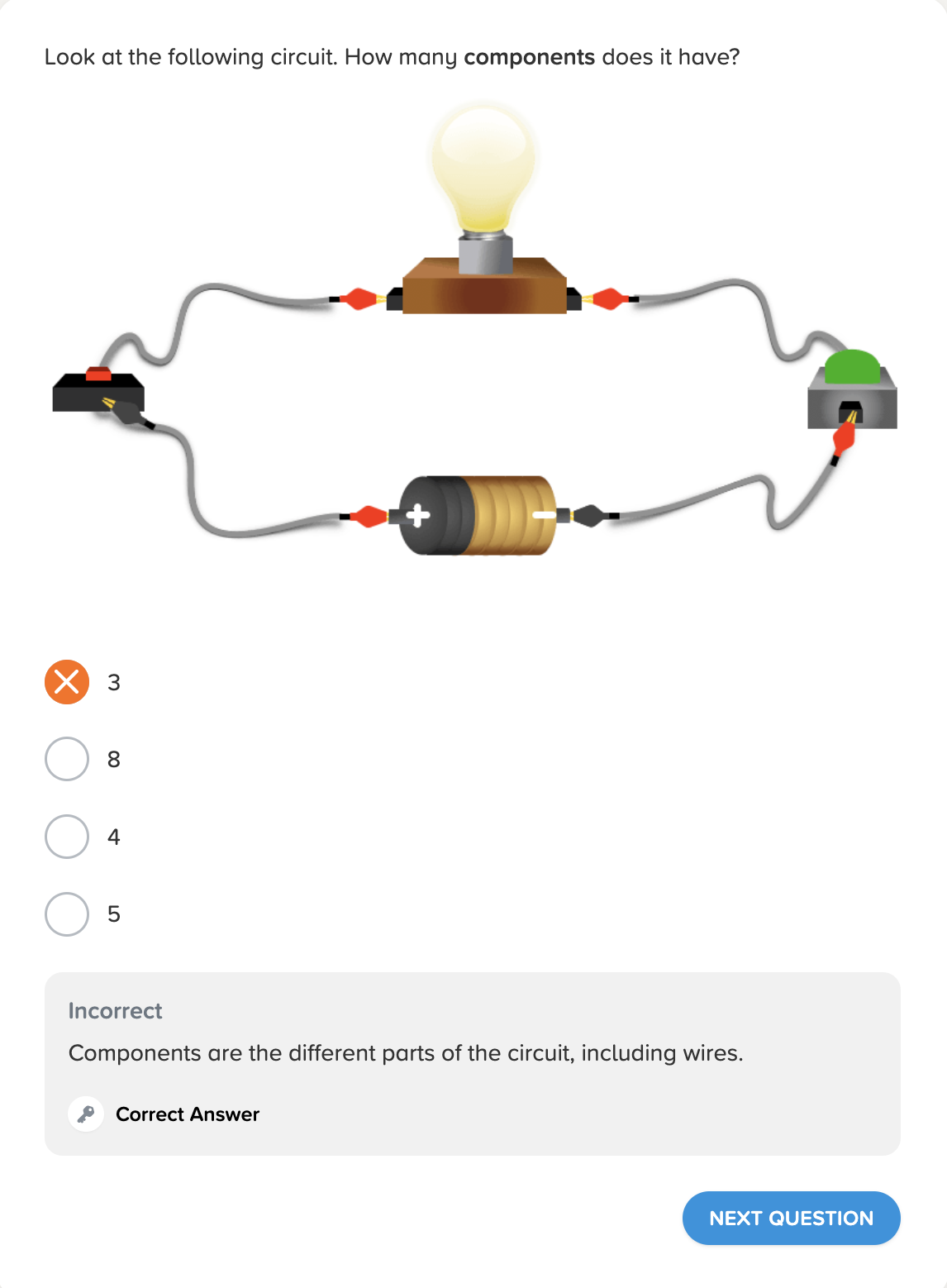
To learn more about how we have embedded the science of learning into the CENTURY platform, book a demo here. Click here to learn more about the impact of CENTURY in a secondary school, primary MAT and FE college.
*Kirschner, P. A., Sweller, J., & Clark, R. E. (2006). Why minimal guidance during instruction does not work: An analysis of the failure of constructivist, discovery, problem-based, experiential, and inquiry-based teaching. Educational Psychologist, 41(2), Article 2.
CENTURY in the news
View all News
-

Blog
1st December 2025
The Critical Edge: Why Precision of Language Secures Your Exam Success
Clear, accurate scientific language can make the difference between grade boundaries. This article explores the most common mistakes students make in biology, chemistry and physics exam answers.
Read more
-

Blog
28th November 2025
Supporting Every Learner: How the CENTURY Wellbeing Tool Helps Schools Understand…
Discover how the research-backed CENTURY Wellbeing Tool helps schools measure and track student wellbeing, helping to improve engagement and achievement.
Read more